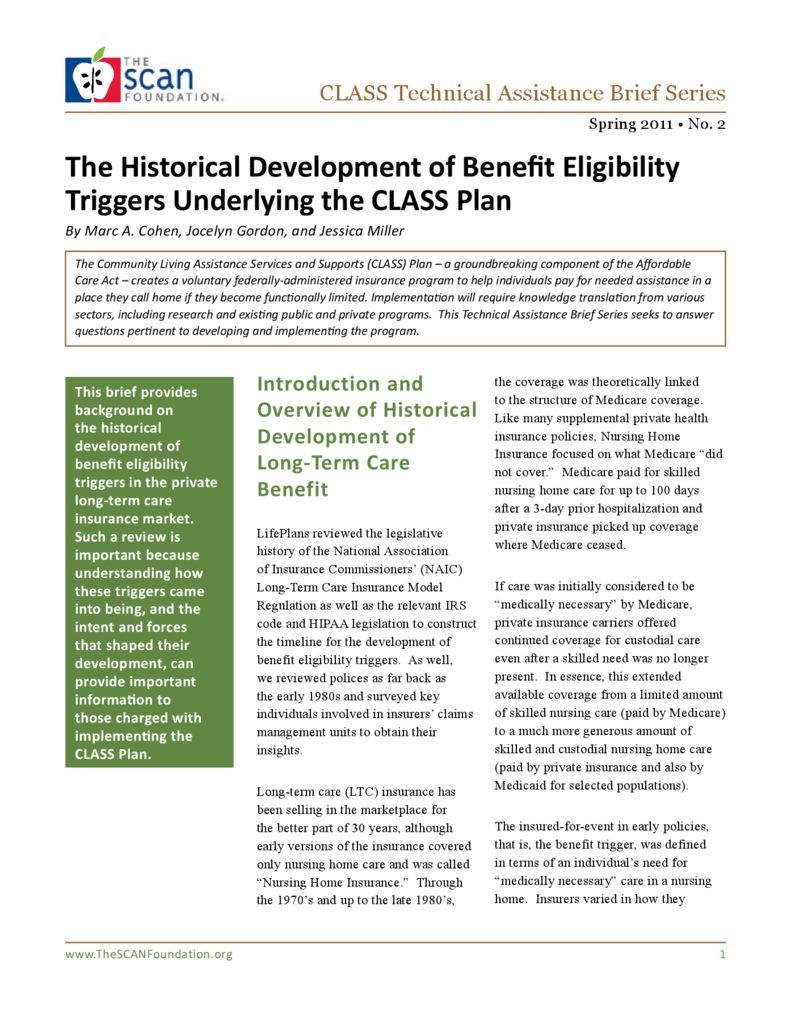The Historical Development of Benefit Eligibility Triggers Underlying the CLASS Plan
summary
This policy brief provides background on the historical development of benefit eligibility triggers in the private long-term care insurance market. Understanding how these triggers came into being can provide important information to those charged with implementing the CLASS Plan.
Date Updated: 04/06/2011Introduction and Overview of Historical Development of Long-Term Care Benefit LifePlans reviewed the legislative history of the National Association of Insurance Commissioners’ (NAIC) Long-Term Care Insurance Model Regulation as well as the relevant IRS code and HIPAA legislation to construct the timeline for the development of benefit eligibility triggers. As well, we reviewed polices as far back as the early 1980s and surveyed key individuals involved in insurers’ claims management units to obtain their insights…
Download the publication for all visuals and complete references.
Continue Reading
This policy brief provides information about how long-term care insurers implement benefit eligibility triggers in the private insurance market. The way in which companies have operationalized benefit eligibility triggers can inform the development of regulations for the CLASS Plan.
This policy brief provides information on the benefit eligibility assessment process in the private long-term care insurance industry. It focuses on how long-term care insurers use the information in the adjudication process, who is involved in the process, and how activities of daily living and cognition are assessed.
This policy brief identifies the elements states use for an assessment of a person’s physical and cognitive limitations and need, and compares these elements to the requirements of the CLASS Plan.


